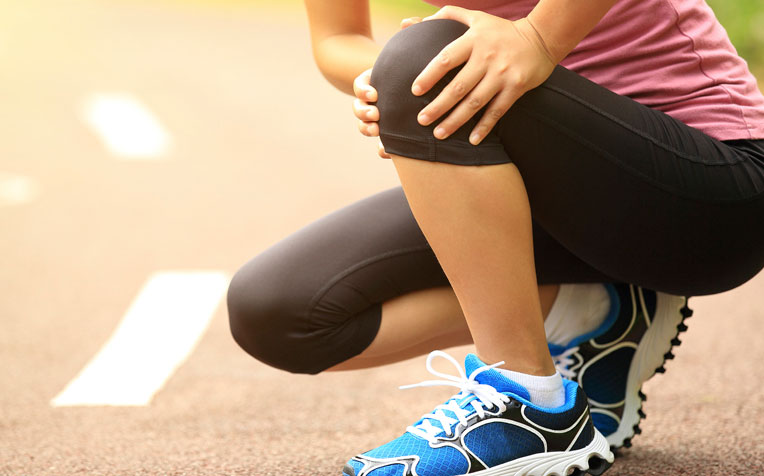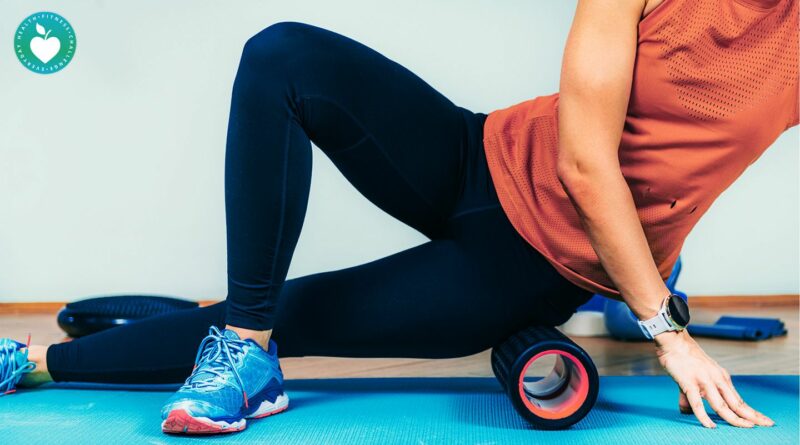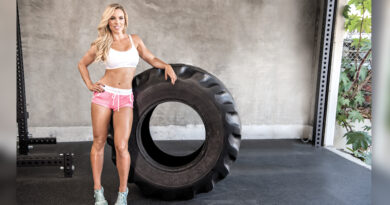Sore Muscles After a Workout : Tips to Ease the Pain
Sore muscles after a workout are a common experience due to microscopic tears in the muscle fibers. It is a sign that muscles are adapting and becoming stronger.
After a workout, it is essential to allow the body to rest and recover, giving muscles time to repair and build new tissue. Incorporating stretching, foam rolling, and a proper diet can also aid in muscle recovery and reduce soreness.
Hydration is crucial, as well, as it helps to flush out toxins and prevent dehydration that may prolong muscle soreness. It’s important to continue to challenge the body with exercise, but it’s equally important to give it the time and care it needs to recover between workouts, preventing injury and keeping the body healthy.

Credit: www.healthxchange.sg
Understanding Sore Muscles After A Workout: The Science Behind It
Muscle soreness is common after a workout. The science behind it is fascinating. How does it happen? When you work out, you cause microscopic tears in your muscle fibers. This causes acute muscle soreness. However, if you work out intensely or for longer periods, you will experience delayed onset muscle soreness (doms).
It can start 24-72 hours after the workout. Doms is completely normal and signifies that the muscles are repairing and recovering. Taking a day off from working out can help your muscles recover. Giving them time to recover can prevent injuries and help you achieve better results from your workouts.
1. Proper Warm-Up And Cool-Down
Proper warm-up and cool-down preparing your muscles with a dynamic warm-up reduces the risk of injury. A good warm-up should include movements similar to your workout routine. Also, it should gradually increase your heart rate and body temperature. On the other hand, cooling down with a static stretch can prevent muscle soreness.
It helps to relax your muscles and improve flexibility. Therefore, include 5-10 minutes of stretching exercises in your cool-down routine. It’s essential to spend time on both warm-up and cool-down. They’re critical components of any workout and should be given equal importance.
By doing so, you’ll avoid muscle soreness and enhance your training performance.
2. Stay Hydrated
Staying hydrated is essential during and after a workout. Dehydration can cause muscle soreness, making it harder to move and perform activities the next day. To avoid this, drink water before, during, and after exercise. According to experts, you should drink at least 17-20 ounces of water two to three hours before exercise.
During the workout, drink 7-10 ounces of water every 10-20 minutes. After the workout, drink at least 8 ounces of water within 30 minutes and continue hydrating throughout the day. Staying hydrated is very important for preventing muscle soreness and cramping.
Make sure to drink enough water when working out to stay healthy and keep your muscles happy.
3. Rest And Recover
Rest days are vital for muscle recovery after intense workouts. Taking time to let your body recover allows for any tears or damage to be repaired. Incorporating active recovery into your routine, such as stretching and low-intensity activities, can also help to decrease soreness and improve overall performance.
It’s important to remember that pushing yourself too hard without proper rest can lead to injury and hinder progress. Listen to your body and prioritize rest to see the best results from your workout routine.
4. Massage Therapy
Massage therapy is a beneficial way to alleviate sore muscles after a workout. It not only helps to reduce muscle tension and inflammation but also promotes blood circulation and enhances flexibility. Different types of massage therapy include swedish massage, deep tissue massage, and sports massage.
Swedish massage uses long, smooth strokes, and is great for relaxation. Deep tissue massage involves applying firm pressure to the deeper layers of muscles and is great for breaking up scar tissue. Sports massage, as the name suggests, is typically used by athletes and focuses on specific muscle groups.
By incorporating massage therapy into your post-workout routine, you can reduce muscle soreness and improve your overall physical well-being.
5. Ice And Heat Therapy
Ice and heat therapy are excellent for sore muscles after a workout. It’s essential to use the right therapy at the right moment. Ice therapy can reduce inflammation and swelling after a workout, but it’s not ideal for tight muscles.
Heat therapy can help relieve discomfort and increase flexibility, especially for tight muscles. Ensure you apply ice or heat therapy with proper techniques. For ice therapy, apply ice to the affected region for 15-20 minutes, but avoid using it for more than 20 minutes.
You can use heating pads or take a warm bath or shower for heat therapy. But remember, do not use heat therapy with acute injuries, which can increase inflammation.
6. Nutrition And Supplementation
Nutrition is a critical component when it comes to recovering sore muscles after a workout. Eating a balanced diet that is rich in protein, carbohydrates, and healthy fats helps the body repair and rebuild muscle tissue. Additionally, consuming antioxidants such as vitamin c and e can aid in reducing inflammation.
Some supplements that can aid in muscle recovery include whey protein, bcaas, and fish oil. These supplements help provide the body with the necessary nutrients it needs to repair muscle tissue, reduce inflammation, and aid in overall muscle recovery. By incorporating proper nutrition and supplementation into your post-workout routine, you can help reduce sore muscles and improve overall muscle recovery.
7. Listen To Your Body
It’s not uncommon to experience sore muscles after a good workout. However, it’s important to listen to your body during exercise. There’s a limit to what your body can handle, and pushing past it can result in injury. How do you know when you’re pushing yourself too hard?
First, understand the difference between good pain and bad pain. Good pain is a natural sensation you feel during exercise, while bad pain is sharp and sudden and should be a warning sign to stop. Remember that everyone’s body is different, so don’t compare yourself to others.
Stop if you feel any discomfort, pain, or unusual sensations during a workout. Always prioritize your health and well-being over achieving fitness goals.
Tips To Prevent Muscle Soreness After A Workout
Preventing muscle soreness after a workout is essential to maximize performance. Gradually increasing workout intensity over time is crucial. Proper form during exercises can help avoid injury and reduce soreness. Stretching before and after a workout can also help prevent sore muscles.
Try holding each stretch for at least 30 seconds and avoid bouncing. It’s important to listen to your body and take breaks if needed. Foam rolling is another effective way to reduce muscle soreness. It’s recommended to focus on the areas that feel the most tender.
Remember, preventing muscle soreness is all about taking proper steps before and after your workout routine.
Frequently Asked Questions Of Sore Muscles After A Workout
Why Do Muscles Get Sore After A Workout?
Muscles get sore after a workout due to the microscopic damage caused by exercise. This damage leads to inflammation and the buildup of lactic acid, resulting in muscle soreness.
How Long Will My Muscles Be Sore After A Workout?
Muscle soreness can last for 24-72 hours after a workout, depending on the intensity and type of exercise. It’s important to give your muscles time to recover and rest before exercising again.
Will Stretching Before Or After A Workout Help Prevent Soreness?
Stretching before and after a workout can help prevent muscle soreness by increasing blood flow and flexibility. However, be sure to stretch properly and avoid over-stretching, which can lead to injury.
Is It Safe To Exercise With Sore Muscles?
It’s safe to exercise with sore muscles, but it’s important to listen to your body and avoid over-exerting yourself. Consider doing light exercises or stretching to help ease muscle soreness.
What Are Some Ways To Alleviate Muscle Soreness After A Workout?
Ways to alleviate muscle soreness after a workout include staying hydrated, getting enough rest, using ice or heat therapy, taking an epsom salt bath, and gently stretching or massaging the sore muscles.
Conclusion
Finally, dealing with sore muscles after a workout is a common challenge that needs to be tackled with patience and care. Immediate remedies could help alleviate the discomfort, but long-term solutions demand a proper workout routine, regular rest, and proper hydration.
When developing a workout plan, it is essential to start slow and gradually increase the intensity to avoid overloading the body. Also, engaging in different exercises helps work out different muscle groups, ensuring a balanced overall workout. Sore muscles after a workout are normal, but one shouldn’t dread them.
Rather, embrace them as a sign of progress and a chance to grow and improve. By following the tips mentioned above, you can efficiently manage sore muscles to attain your fitness goals without having to endure excruciating discomfort.




